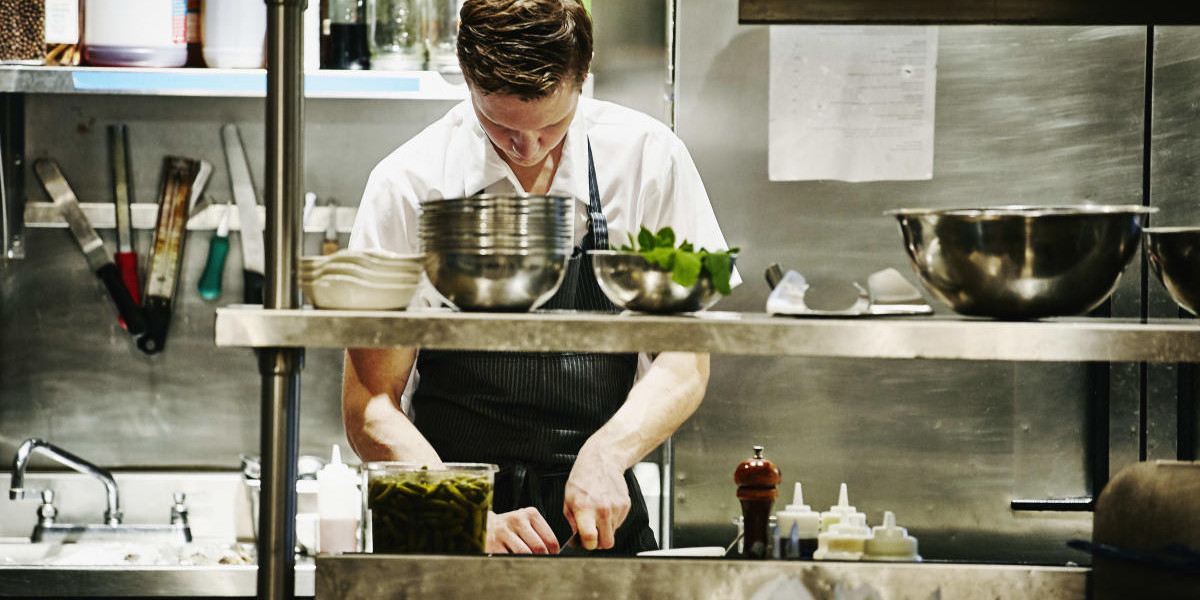The ghost kitchen market has emerged as one of the most transformative developments in the global foodservice sector. Born out of the digital revolution and accelerated by the pandemic, ghost kitchens—also known as virtual or cloud kitchens—have proven their resilience and adaptability. As the industry matures, its long-term outlook points toward sustained growth, deeper integration of technology, and widespread global expansion.
With no front-of-house operations and a laser focus on delivery and takeout, ghost kitchens are redefining how food businesses operate. This article explores the major factors shaping the future of the ghost kitchen market and why it remains one of the most promising sectors in the food and beverage industry.
1. Continuous Surge in Online Food Delivery
The growth of food delivery is not a temporary trend—it represents a permanent shift in consumer behavior. Millennials and Gen Z consumers, in particular, prefer the convenience of ordering food through apps rather than dining out. According to market analysts, global food delivery sales are expected to double in the next few years.
Ghost kitchens are uniquely suited to cater to this rising demand. By operating exclusively through online platforms, they eliminate the overhead costs of traditional restaurants while maximizing delivery efficiency and scalability. This alignment with digital-first consumption patterns supports a strong long-term market outlook.
2. Evolving Business Models and Hybrid Concepts
In the years ahead, the ghost kitchen model is expected to evolve beyond standalone virtual operations. The industry is seeing the rise of hybrid concepts, such as:
Shared kitchen spaces serving multiple brands
Retail and grocery collaborations
Kitchen pods in high-demand delivery zones
These hybrid models allow brands to be more flexible, reduce risk, and adapt to local demand quickly. The ability to shift formats and scale efficiently ensures that ghost kitchens remain relevant across diverse geographies and consumer segments.
3. Investment and Venture Capital Interest
The long-term prospects of the ghost kitchen market have attracted significant investment from venture capital firms, private equity groups, and even tech giants. Companies like CloudKitchens, REEF, and Kitchen United have raised hundreds of millions of dollars to build out ghost kitchen infrastructure across major global cities.
This infusion of capital is being used to expand kitchen networks, integrate advanced technologies, and attract culinary talent. As more investment pours into the sector, innovation and growth will accelerate, solidifying the position of ghost kitchens as a major player in the foodservice ecosystem.
4. Technology as a Core Enabler
Technology will continue to drive the long-term scalability and sustainability of ghost kitchens. From AI-based order management to IoT-enabled kitchen monitoring, the use of digital tools allows operators to streamline operations, reduce waste, and optimize customer experiences.
Additionally, proprietary apps and websites are helping ghost kitchens break free from overdependence on third-party aggregators. Direct-to-consumer ordering platforms will become increasingly common, improving margins and enhancing brand loyalty over time.
5. Expansion Beyond Urban Markets
While ghost kitchens initially gained popularity in densely populated cities, future growth will come from expansion into suburban and rural areas. The rise of e-commerce infrastructure and logistics solutions makes it easier for ghost kitchens to reach customers in smaller towns.
As demand for convenience spreads geographically, ghost kitchens will adapt by setting up micro-kitchens and delivery hubs closer to these new customer bases. This regional expansion represents a key element of long-term growth.
6. Focus on Brand Building and Customer Loyalty
A major long-term challenge for ghost kitchens is establishing brand recognition in a crowded digital marketplace. Without physical storefronts, these brands must rely heavily on digital marketing, packaging, reviews, and food quality to make a lasting impression.
Over the coming years, successful ghost kitchens will invest in storytelling, loyalty programs, and social media engagement to build stronger customer relationships. The rise of influencer and celebrity-backed virtual brands also points toward a more competitive branding environment.
7. Regulatory and Infrastructure Support
As ghost kitchens become a staple in modern food systems, governments and municipalities are beginning to adapt regulations to support their growth. New licensing models, zoning adjustments, and food safety frameworks are emerging to streamline operations and ensure compliance.
Moreover, real estate developers are increasingly designing spaces specifically for ghost kitchen operations, equipped with the necessary infrastructure to support high-volume production and delivery. This institutional support will help formalize and stabilize the sector in the long run.
8. Globalization of the Ghost Kitchen Model
The ghost kitchen concept is not limited to a few countries—it is expanding rapidly across the globe. Markets like India, the Middle East, Southeast Asia, and Latin America are experiencing rapid adoption due to high urbanization rates and growing demand for food delivery.
International expansion, paired with localized menus and regional partnerships, will continue to fuel long-term global growth. This globalization ensures that the market will not plateau but continue to find new frontiers for development.
Conclusion
The long-term outlook for the ghost kitchen market is overwhelmingly positive. With consumer habits evolving, technology advancing, and business models becoming more sophisticated, ghost kitchens are poised to remain a dominant force in the food delivery economy.
As the industry matures, we can expect to see enhanced customer experiences, improved operational efficiency, and more diverse food offerings. For restaurateurs, entrepreneurs, and investors, ghost kitchens offer a unique opportunity to innovate and thrive in a changing culinary landscape.
Discover more: https://www.pristinemarketinsights.com/ghost-kitchen-market-report









